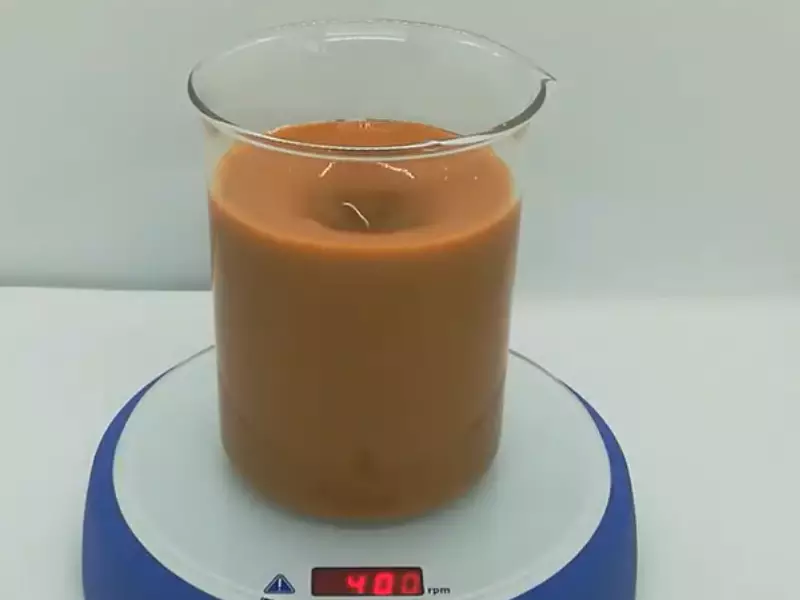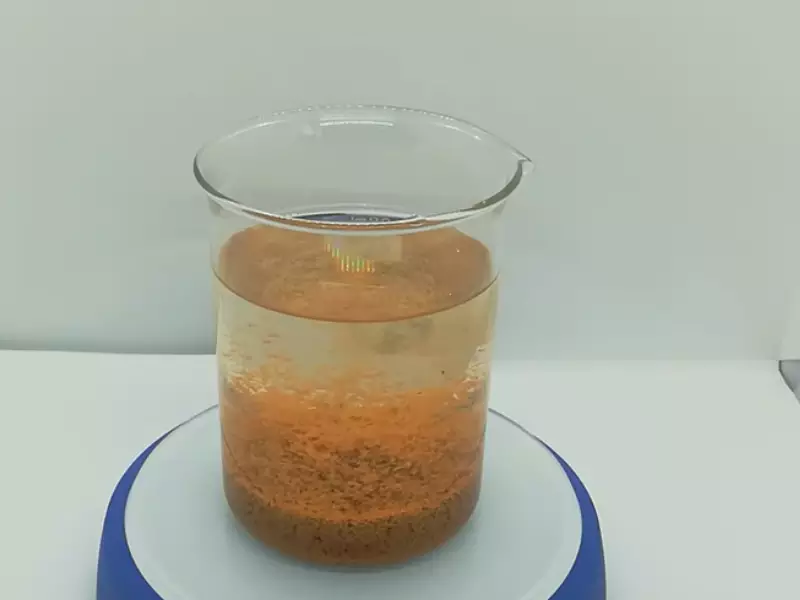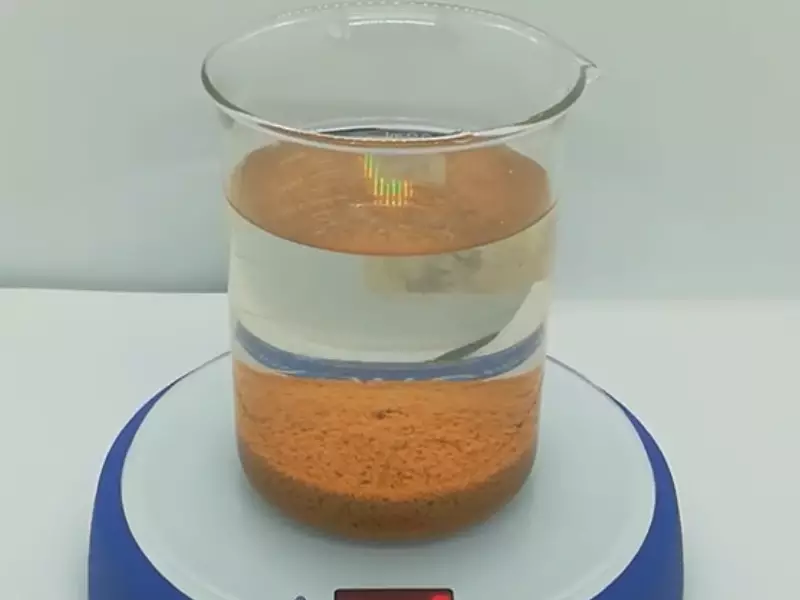Clean and clear water is the hallmark of a healthy well, but sometimes homeowners face the challenge of murky or cloudy water. Turbidity, the measure of water clarity, can often pose health and aesthetic issues.
Turbidity in well water is primarily caused by suspended particles, such as sediment, algae, or contaminants. High turbidity levels not only affect the taste and appearance of water but also damage appliances and pose potential health risks.
Ensuring that well water remains free from excessive turbidity is crucial. To address this concern, various simple and effective methods are available, offering both short-term fixes and long-term solutions.
What Causes Turbidity in Well Water?
Turbidity, in essence, describes water that is not clear but is clouded by small particles and substances. The causes can range from natural occurrences to human-made contaminants.

Natural Sediments
- Origin of Sediments: Earth is dynamic, and over time, soil erosion or disturbances in the land, such as heavy rainfall or construction, can lead to sediments being washed into groundwater sources. Such sediments predominantly include silt, clay, and fine particles.
- Interplay with Seasons: Seasonal changes can also play a role in turbidity levels. For instance, during rainy seasons or after snowmelt, you may notice an increase in the turbidity due to runoffs carrying more sediments into the groundwater sources.
- Solution: Implementing silt fences, erosion control mats, or even strategically planted vegetation can help reduce sediment runoff into well water sources.
Algal Blooms
- Why Algae Matter: Algae are naturally occurring, but when their growth becomes uncontrollable in water sources, it results in algal blooms. These blooms can lead to significant increases in water turbidity.
- Nutrient Overload: Often, algal blooms result from an overabundance of nutrients like phosphorus and nitrogen. Sources can include agricultural runoff, septic system leakages, or even certain natural events.
- Solution: Controlling nutrient sources and reducing the input of these nutrients into well water areas can be effective. This could be through better management of agricultural runoffs or regular inspection of septic systems.
Contaminants
- What Constitutes a Contaminant?: Beyond sediments and algae, contaminants can be a diverse group – from microorganisms to organic matter or even chemicals from industrial processes.
- Effects on Health and Environment: Not only do contaminants raise turbidity levels, but they can also pose significant health risks, especially if they include harmful chemicals or pathogens. Moreover, they can disrupt the local ecosystem by harming aquatic life.
- Solution: Regular water testing can identify contaminants, allowing for timely remediation. Also, ensuring that industrial or agricultural practices near well water sources meet environmental guidelines can minimize contamination risks.
Effects of High Turbidity
When water clarity diminishes, it is not just an aesthetic concern. High turbidity has broader implications that homeowners need to be aware of.
Health Implications
- Pathogens and Microbes: Water with high turbidity can conceal harmful microorganisms. These pathogens, if ingested, can lead to gastrointestinal diseases or other health problems.
- Chemical Contaminants: Apart from pathogens, turbid water might also mask harmful chemical pollutants. Prolonged consumption of such water can lead to chronic health issues, including reproductive problems or even certain cancers.
- Solution: Installing a multi-stage filtration system can help eliminate both pathogens and chemical contaminants, ensuring that the well water is safe to consume.

Appliance Damage
- Sediment Accumulation: Appliances like water heaters, dishwashers, and washing machines can get damaged due to the sediment in turbid water. The accumulation can erode the machine parts or reduce their efficiency.
- Increased Maintenance Costs: With continuous exposure to turbid water, appliances might require more frequent maintenance or even replacements, leading to higher costs in the long run.
- Solution: Using pre-filters before the main filtration system can trap larger sediments, protecting your appliances from potential damage.
Aesthetic Issues
- Unpleasant Sight and Taste: Turbid water, by its very nature, looks unappealing. It can also have an off taste, making it unsuitable for drinking or culinary purposes.
- Stains and Residues: Highly turbid water can leave stains on utensils, clothes, and even fixtures. Over time, this can lead to discoloration and require homeowners to invest in cleaning or replacement.
- Solution: While the primary objective would be to treat the turbidity at its source, homeowners can also consider point-of-use filters for specific areas like the kitchen to ensure clean water for cooking and drinking.
Simple Methods to Reduce Turbidity
Addressing turbidity is a multi-faceted approach, considering the range of potential causes. Here are some tailored solutions to common turbidity problems.
Sediment Filters
- Layered Filtration: Modern sediment filters often come with multiple layers, each designed to trap particles of specific sizes. This ensures comprehensive filtration and clear water output.
- Backflushing Capability: Some advanced sediment filters have an automatic backflushing feature. This helps in cleaning the filter, extending its life, and maintaining efficient performance.
- Solution: Regularly check and replace sediment filters to ensure they function optimally. Consider a filter with an indicator that alerts you when it’s time for a replacement.
Reverse Osmosis Systems
- Stages of Filtration: An RO system is more than just the RO membrane. It often includes sediment pre-filters, carbon filters, and the main RO membrane, ensuring thorough water purification.
- Waste Water Consideration: While RO systems are efficient, they do produce wastewater. Opt for systems that have a better water-saving ratio to ensure minimal wastage.
- Solution: Regularly check the RO membrane for any damages or clogs. Even though it’s a low-maintenance system, occasional checks can prolong its life and ensure consistent water quality.
Regular Well Cleaning
- Biofilm Development: Over time, a slimy layer called biofilm can develop on the walls of a well. This biofilm can harbor bacteria and other contaminants, increasing turbidity.
- Professional Inspection: Occasionally, it’s beneficial to get the well inspected by professionals. They can identify issues that might not be apparent to homeowners and recommend appropriate solutions.
- Solution: Adopt a routine cleaning schedule. Depending on the local conditions and the well’s age, cleaning can range from once a year to once every few years. Use non-toxic cleaning agents to ensure that the well water remains safe for consumption.
Flocculation Process
- How Flocculants Work: Flocculants are substances that help in binding smaller particles together, forming larger clumps or “flocs”. These flocs then settle to the bottom, making it easier to remove them.
- Safety Concerns: While chemical flocculants are effective, they can introduce other contaminants into the water if not used correctly.
- Solution: Opt for natural flocculants wherever possible. If using chemical ones, ensure you follow the recommended dosage and post-treatment guidelines to ensure water safety.

Choosing the Right Solution for Your Well:
Assessing Turbidity Levels
- Water Clarity Tests: A simple visual test can often indicate if your well water has a high turbidity level. Water that appears cloudy or has visible particles should raise concerns.
- Turbidity Meters: These devices measure the scattering effect particles in the water have on light. The readings are typically given in Nephelometric Turbidity Units (NTU) – the higher the NTU value, the higher the turbidity.
- Comprehensive Analysis: While visual checks and meters can provide an immediate understanding, lab tests can offer a detailed breakdown of the particulate matter, helping homeowners make informed decisions.
Costs vs. Benefits Analysis
- Immediate vs. Long-Term Costs: Some solutions might be more cost-effective initially but can incur higher maintenance costs in the long run. Conversely, investing more upfront on a sophisticated system might save money and hassles down the line.
- Health and Safety Priorities: It’s crucial to factor in the health risks associated with high turbidity. The potential medical costs and the general well-being of the family might make it worth investing in a top-notch filtration system.
- Resale Value Addition: Homes with a well-maintained water source can see an increase in their resale value. Future buyers might be willing to pay more for a property where water quality issues have been comprehensively addressed.
DIY vs. Professional Solutions
- Skill and Knowledge: While there are many DIY solutions available, understanding the intricacies of well water systems is essential. A misstep can sometimes exacerbate the problem.
- Tools and Equipment: Professional solutions often employ advanced tools and machinery that might not be readily available for a DIY approach.
- Guarantee of Work: Professionals usually provide a warranty or guarantee for their services, offering peace of mind. If the problem persists or resurfaces, they’re bound to address it without additional charges.
Regular Monitoring and Prevention:
Importance of Regular Water Testing
- Changing Groundwater Dynamics: Groundwater sources can evolve over time. What was once a pristine source can get affected by various factors, underlining the importance of routine tests.
- Early Detection: Regular testing can identify issues at an early stage, allowing for timely interventions. This can often save costs and prevent the escalation of health risks.
- Validation of Solutions: Once a turbidity solution is implemented, periodic tests can validate its effectiveness and provide insights if adjustments are needed.
Identifying Potential Contaminant Sources
- Survey Surroundings: Understand the activities around the well’s vicinity. Are there any construction sites, factories, or farmlands that might be contributing to the turbidity?
- Seasonal Variations: At certain times of the year, like post-rainy season or after snowmelt, there could be an uptick in turbidity levels. Recognizing these patterns can aid in preparedness.
- Signs in Nature: Sometimes, changes in the local flora and fauna can be an indicator of water quality changes. A decline in certain species or the sudden proliferation of others can serve as a clue.
Preventative Measures
- Buffer Zones: Create a buffer zone around the well, restricting certain activities that can lead to sediment runoff or contamination.
- Routine Maintenance: Whether it’s cleaning the well, changing filters, or checking the equipment, a routine maintenance schedule can preempt many turbidity issues.
- Community Engagement: If several homes in the vicinity use well water, forming a community group can be beneficial. Such groups can share knowledge, pool resources for testing, and collectively address larger contamination sources in the area.
Frequently Asked Questions
How often should I test my well water?
It’s advisable to test well water annually. If there are noticeable changes in taste or appearance, consider testing more frequently.
Can boiling water reduce turbidity?
Boiling can kill pathogens but doesn’t remove suspended particles. To reduce turbidity, filtration methods are more effective.
Are there any natural ways to decrease turbidity?
Yes, natural flocculants like Moringa seeds can help. Additionally, ensuring proper well construction and maintenance can naturally prevent many causes of turbidity.
Conclusion
Turbidity in well water can be more than just an aesthetic concern. With potential health risks and appliance damage on the line, addressing this issue is paramount.
Several methods, from basic sediment filters to advanced RO systems, offer solutions tailored to the severity and nature of the turbidity issue. While periodic professional consultations can provide expert insights, homeowners can also take proactive measures to maintain clear and clean well water.
Ultimately, the health and wellbeing of a household depend on the quality of its water. Recognizing, addressing, and preventing turbidity issues ensures that every drop from the well remains pure and pristine.